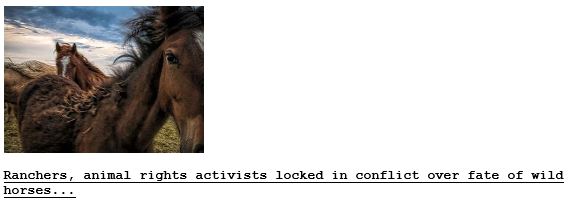The roundup, to be coordinated by the Fillmore Field Office, was set to begin today in western Utah, according to the BLM news release.
A map at BLM’s Utah State Office shows the Fillmore office in the West Desert District.
Most of the HMA is in the Thousand Peaks allotment, as noted in the Short End of Stick report.
The grazing arrangement can also be found by searching BLM’s NEPA site for projects involving the Confusion HMA.
- State: Utah
- Program: Wild Horses and Burros
Leave the other fields blank. Over-specifying a search is a good way to not find what you’re looking for. Uncheck the Show Only Active Projects box and hit Search.
The Confusion Wild Horse Gather Plan appears on the first page. Right-click the link and go to the Documents section. The Final EA was combined with the DR and FONSI and begins on page 19 in the pdf. Table 4a on page 45 has the allotment information.
Go to the Rangeland Administration System and right-click Authorization Use by Allotment to open the report in new tab.
- State: Utah
- Office: Fillmore
- Allotment: Thousand Peaks
Click Apply to run it. The system generates the results as a pdf file that you can save for future reference. The allotment is designated for cattle, with the permittee receiving 12,289 AUMs per year over a seven month grazing season. Turnout could have occurred as early as October 28, so livestock may be present during the roundup.
The horses allowed by plan receive 1,380 AUMs per year.
Go back to the RAS main page and right-click Allotment Information to launch the report in a new tab.
- State: Utah
- District: West Desert
- Field Office: Fillmore
Click OK to generate the results. The allotment number, from the first report, is UT25030. Click the Next 100 Rows icon at the bottom of the list (∨) until you reach rows 301 – 324. Scroll up until you see the Thousand Peaks allotment. It contains 337,966 acres and is in the Improve category, which may indicate that it’s not meeting all of the standards for rangeland health.
Go back to the RAS main page and right-click Operator Information to launch the report in a new tab.
- State: Utah
- District: West Desert
- Field Office: Fillmore
Click OK to run the report. The authorization number for the allotment, from the first and second reports, is 4303292. Scroll down until you find it. The operator is Thousand Peaks Ranches Inc, a producer of range-fed beef.
Would you buy it if you knew it?
You can go through the same process to identify the other four operators, who may appear to be minor beneficiaries of the operation, until you realize that some of the horses may have ventured off the HMA in search of food and water.
Roundups and other population controls can’t change the resource allocations and management priorities on public lands—they can only enforce them—but they can alleviate temporary AUM reductions that were put into effect because of the horses.
The goal of the rancher-friendly ‘Path Forward‘ is to not have any AUM reductions, by matching herd sizes to the crumbs available through the RMPs.
RELATED: Confusion at Confusion HMA About Cause and Effect?







